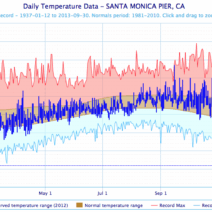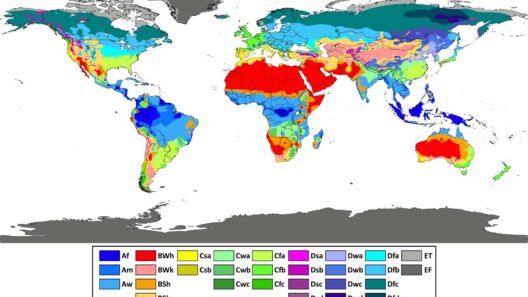The climate of Greece is a captivating tapestry woven from the threads of the Mediterranean’s diverse weather patterns. Renowned for its picturesque landscapes, azure waters, and archaeological treasures, Greece presents an enticing destination characterized by its balmy climes and radiant sunshine. Understanding the climatic conditions of this enchanting country not only enlightens potential visitors but also underscores the pressing realities of climate change that threaten such natural beauties. Let’s delve into the atmospheric intricacies that define Greece’s climate, exploring its seasonal variations, prevailing weather phenomena, and the implications of climate shifts on this storied land.
Primarily, Greece enjoys a Mediterranean climate, marked by hot, dry summers and mild, wet winters. This climatic classification arises from Greece’s geographical position at the junction of three continents—Europe, Asia, and Africa—creating a unique convergence of weather patterns. The archipelago’s varied topography, which includes mountainous regions and sprawling coastlines, further influences the microclimates experienced across its numerous islands and territories. The term “Mediterranean” itself conjures images of sun-drenched summers; indeed, Greece delivers on this promise, with temperatures frequently soaring above 30 degrees Celsius (86 degrees Fahrenheit) during the height of summer.
Summer, extending from June to September, is a resplendent season in Greece. The coastal areas bask in long, sunlit days that seem to stretch infinitely, with little respite from the heat. The warmest month, usually August, draws visitors eager to indulge in beachside leisure, sipping ouzo while gazing upon the glowing Aegean Sea. Conversely, the interior regions, particularly in higher altitudes, experience a more temperate climate, with cooler evenings providing a comforting balm after the day’s heat. These notable temperature differentials create an alluring juxtaposition that intrigues both environmentalists and tourists alike.
As the season transitions to autumn, a subtle metamorphosis occurs. The relentless sun begins to wane, and the dry landscape imbibes the refreshing rains that commence in October. This period heralds the onset of a more temperate climate, one that welcomes both a bounty of agriculture and a panorama of lush greenery across the country’s verdant hills. This rejuvenation is critical for Greece’s diverse flora, and marks the beginning of the harvest season, during which olives, citrus fruits, and grapes flourish.
Winter in Greece is often overlooked, yet it possesses its own unique allure. From December to February, the mountainous regions, notably in places like the Pindus range, awaken to a stark beauty enveloped in snow. Coastal areas, however, enjoy relatively mild temperatures, seldom plunging into extreme cold. The winter months introduce a less predictable variant of weather, with periods of rain enveloping the land in moisture essential for sustaining its famed agricultural outputs. The contrast between sunny tourist locales and the serene, snow-laden mountains presents a fascinating dimension of Greece’s climate.
With the arrival of spring, Greece transforms once more. March through May brings a symphony of colors as wildflowers dot the landscape, and temperatures rise, creating a perfect blend of warmth and refreshment. The delightful weather facilitates various outdoor activities, drawing in botanists, ecologists, and nature enthusiasts eager to witness the blossoming of the flora that characterizes this region. The gradual increase in temperature preludes the impending heat of summer, allowing individuals to revel in the natural beauty before the peak tourist season ignites.
While the climatic conditions of Greece seem idyllic, the repercussions of climate change are beginning to unfold, casting shadows on this paradisiacal setting. Rising global temperatures contribute to more frequent and intense heat waves, exacerbating drought conditions that threaten agriculture, particularly in regions heavily reliant on rain-fed crops. This phenomenon can lead to an increased incidence of wildfires during the dry months, a disturbing occurrence that has ravaged parts of Greece in recent years. The delicate equilibrium of the Mediterranean ecosystem is at risk, prompting urgent calls for sustainable practices to mitigate the adverse effects of climate change.
Moreover, sea level rise poses a significant challenge to Greece’s extensive coastline. Coastal erosion and the encroaching sea threaten historical sites and quaint fishing villages, presenting complex dilemmas for local governments and conservationists alike. The interplay between climate adaptation strategies and the preservation of cultural heritage must be meticulously navigated to protect the essence of Greece while securing a sustainable future for its inhabitants.
In conclusion, the climate of Greece is a wondrous phenomenon that shapes not only its breathtaking landscapes but also the livelihoods entwined with its environment. From crystal-clear waters basked under the relentless sun to verdant hills nourished by autumn rains, Greece’s diverse climatic dimensions captivate the senses and stir curiosity. However, an increased awareness of the impacts of climate change is imperative. Understanding the shifts in Greece’s weather patterns provides insights that can lead to pivotal changes in policy-making and conservation efforts, ensuring that this Mediterranean jewel can be cherished by future generations. By fostering a renewed appreciation for Greece’s natural environment and recognizing the critical battles against climate change that lie ahead, individuals can alter their perspectives and inspire action—a vital shift that can reverberate far beyond the sunlit shores of this ancient land.








